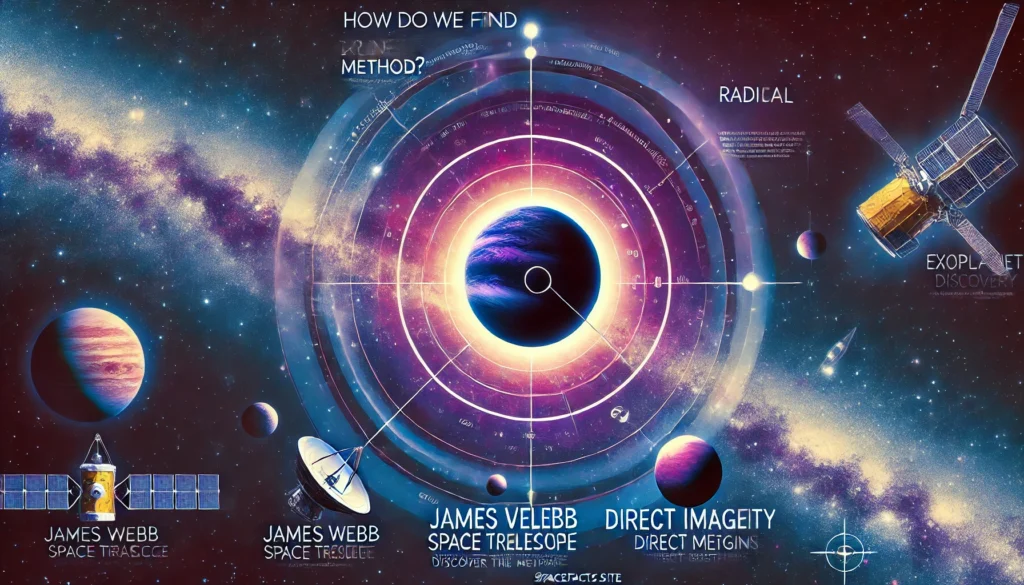Space is full of mysteries, but one of the most exciting questions scientists are tackling today is: How do we find planets beyond our solar system? These mysterious worlds, known as exoplanets, are located light-years away from Earth, orbiting stars far beyond our Sun. Since the first exoplanet was discovered in the 1990s, the search for more has become one of the most thrilling areas of space exploration. But how exactly do scientists find them? Let’s explore the three main methods astronomers use to uncover these distant planets—and why these discoveries matter so much.

What Are Exoplanets?
Simply put, exoplanets are planets that orbit stars outside our solar system. Unlike the eight planets that revolve around our Sun, exoplanets exist in distant solar systems scattered across the galaxy. With over 5,000 confirmed exoplanets and more being discovered each year, these worlds are incredibly varied—some are gas giants, while others are rocky, potentially Earth-like planets.
Finding them isn’t easy. Exoplanets are far away and don’t give off their own light, so detecting them requires some creative science and advanced technology. Let’s take a look at how we find them.
1. The Transit Method: Spotting the Dip in Starlight
The transit method is one of the most widely used techniques to find exoplanets. Here’s how it works:
When an exoplanet passes in front of its star (as seen from Earth), it causes a small but detectable dip in the star’s brightness. This event, known as a “transit,” happens regularly as the planet orbits. The amount of dimming helps scientists calculate the size of the planet and determine whether it might be Earth-like.
Satellites like Kepler and TESS (Transiting Exoplanet Survey Satellite) have used this method to find thousands of exoplanets by watching for these periodic dips in starlight. The beauty of this method is that it’s efficient and can cover vast areas of the sky at once, making it ideal for large-scale searches.
2. Radial Velocity: The Star’s Tiny Wobble
The radial velocity method detects the subtle wobble of a star caused by the gravitational pull of an orbiting planet. When a planet orbits its star, its gravity causes the star to move slightly in response. This movement is incredibly small—sometimes only a few meters per second—but it’s enough for instruments like the Keck Observatory or ESO’s HARPS spectrograph to detect.
By measuring this wobble, scientists can figure out the planet’s mass, orbit, and sometimes even its composition. This method has helped confirm many exoplanet discoveries and remains a key tool in the hunt for new worlds.
3. Direct Imaging: Taking a Planet’s Picture
One of the most challenging ways to discover an exoplanet is direct imaging. In theory, this sounds simple: take a picture of the planet! In practice, however, it’s much harder than it sounds. Stars are incredibly bright compared to the faint light emitted by their planets, so astronomers need to block out the star’s light to reveal the planet’s glow.
Specialized instruments, such as coronagraphs and starshades, are used to block the star’s light, allowing scientists to capture images of exoplanets directly. These images are often taken in infrared, as exoplanets tend to emit more infrared light than visible light. Although direct imaging is still rare, it’s one of the most exciting ways to study planets in detail.
Subscribe us on Youtube Here.
Why Are These Discoveries Important?
So, why does it matter how we find exoplanets? Each discovery brings us closer to understanding our place in the universe and whether life could exist elsewhere. For instance, scientists are particularly interested in Earth-like planets that sit in the “habitable zone” of their star. This is the region where conditions might be just right for liquid water to exist—an essential ingredient for life as we know it.
The discovery of potentially habitable exoplanets could eventually lead to groundbreaking answers to one of humanity’s oldest questions: Are we alone in the universe?
Also Read : How Interstellar Propulsion Systems Are Taking Us Beyond the Stars
Looking Ahead: The Future of Exoplanet Exploration
The search for exoplanets is far from over. With cutting-edge space missions like the James Webb Space Telescope, Nancy Grace Roman Space Telescope, and upcoming ground-based observatories, scientists are poised to learn even more about these distant worlds. In the future, we hope to study exoplanet atmospheres in detail, which could reveal vital information about their habitability and whether they could support life.
Also Read : You never know these facts about Venus
Conclusion:
The search for exoplanets is one of the most exciting scientific endeavors of our time. Whether through the transit method, radial velocity, or direct imaging, astronomers are uncovering new worlds at an astonishing rate. While we’ve only scratched the surface of what’s out there, each discovery brings us closer to understanding whether we’re alone in the universe.
If you’re as fascinated by space exploration as we are, make sure to check out spacefacts.site for more exciting space facts and updates on the latest discoveries. Who knows? The next big discovery could be the one that reveals a new home for humanity.
People Also Like
- Venus in Focus: How Space Missions Are Unveiling Its Hidden Secrets
- How Do We Find Exoplanets? How We Find Alien Worlds
- SpaceX’s Starship: Charting Humanity’s Path to the Stars
- How Interstellar Propulsion Systems Are Taking Us Beyond the Stars
- Space Telescopes Stumble on LID 568: A Record-Breaking Black Hole Discovery





Pingback: Venus in Focus: How Space Missions Are Unveiling Its Hidden Secrets